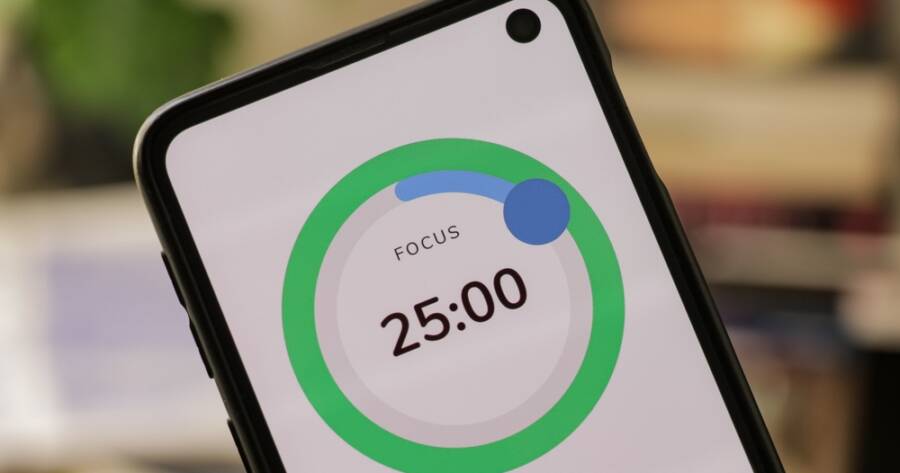In an age filled with constant distractions, more people across the European Union are rediscovering the value of working in short, focused bursts. The Pomodoro Technique — a time management method developed in the 1980s — is enjoying a surprising revival. Designed around 25-minute intervals of concentration followed by short breaks, it offers a clear alternative to multitasking. As screens multiply and attention spans shrink, this simple timer-based system is proving to be an effective strategy for regaining control and getting real work done.
How the Pomodoro Technique Works
Created by Francesco Cirillo while he was a university student in Rome, the Pomodoro Technique is named after the tomato-shaped kitchen timer he used to track his study sessions. The basic format is easy to follow: set a timer for 25 minutes and focus on a single task until the timer rings. Then take a 5-minute break. After four cycles, you take a longer break — typically around 15 to 30 minutes.
This structure turns time into a partner rather than a pressure. Instead of fighting the clock, you’re working with it in short sprints. The method limits fatigue, prevents mental overload, and builds momentum through repeated starts and stops. Many people also find that the fixed duration makes starting tasks less intimidating, especially when dealing with procrastination.
The Decline of Multitasking
For years, multitasking was seen as a badge of honour. Juggling emails, video calls, and spreadsheets seemed like the best way to keep up. But brain science — and lived experience — now tells a different story. Research shows that multitasking reduces cognitive efficiency, increases stress, and leads to more mistakes.
Across European offices and remote work setups, the impact is clear. People often feel overwhelmed, unproductive, and drained by the end of the day — even when they’ve been busy for hours. That’s where Pomodoro offers relief. By focusing on one task at a time, it reduces the mental strain of switching contexts and helps the brain stay organised.
It’s not just about doing less — it’s about doing better. Many users report improved quality of work and faster completion times once they stop trying to do everything at once.
Why Europe Is Embracing Focus Blocks Again
In cities like Amsterdam, Berlin, and Barcelona, the Pomodoro Technique is being woven into coworking spaces, tech startups, and even education systems. Workers are using it to build better concentration habits, while students find it boosts academic performance without late-night cramming.
Culturally, the method aligns with growing EU trends toward mindful productivity and digital well-being. In contrast to hustle culture, Pomodoro encourages rhythm, clarity, and balance. It respects the limits of the human mind — a principle that sits well with European attitudes toward sustainable work and mental health.
The rise of hybrid and remote work across the EU has also contributed to the technique’s popularity. Without the natural boundaries of an office, many people struggle to structure their time. The Pomodoro method provides that structure, using time blocks to anchor deep work while leaving room for rest.
Tools and Techniques to Make It Stick
While the original version of Pomodoro requires nothing more than a timer, modern tools have made it easier than ever to integrate the technique into daily routines. Apps like Be Focused and Forest combine timers with visual cues and progress tracking. Even basic smartphone timers or kitchen clocks do the trick.
For those new to the method, the key is to keep it simple. Choose a task, set the timer, and stick with it. If distractions arise, jot them down and come back to them during a break. With repetition, the cycle becomes second nature.
Some EU workplaces have even adopted communal Pomodoro sessions — shared quiet hours followed by social breaks. These sessions help build team focus while protecting individual time. For freelancers and creatives, it’s also a way to break isolation and maintain steady progress throughout the day.
Small Intervals, Big Results
The Pomodoro Technique is more than a productivity trick — it’s a mindset shift. In a world that rewards constant availability and multitasking, working in quiet, timed blocks feels almost radical. But the benefits are real: clearer thinking, better results, and a greater sense of control over time.
As more people across the EU seek smarter, calmer ways to work, Pomodoro is proving to be a practical ally. It asks little — just a timer and some attention — and gives a lot in return. Sometimes, the best way forward is not faster, but more focused. And 25 minutes may be all it takes to begin again.

